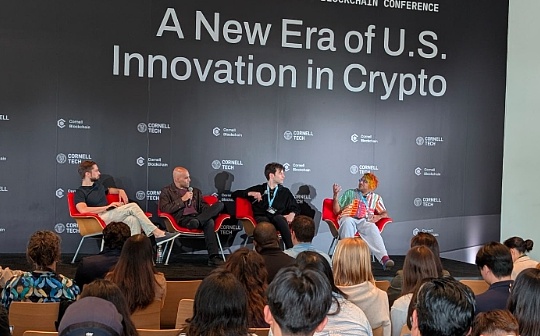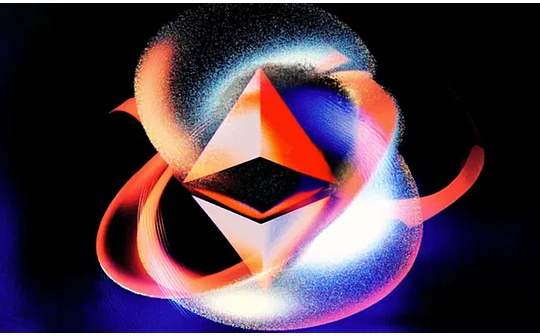
Author: Andrew Singer, CoinTelegraph; Compilation: Baishui, Bitchain Vision
Layer 2 has always been a great success story in the blockchain field.They ease congestion on the Ethereum mainnet, reduce Gas fees, and ensure security.
But perhaps they were so successful that they sucked away a lot of on-chain activity and expense revenue from the parent chain that gave birth to them?At least recently, some people think so, the most recent time was at the Cornell Technology blockchain conference at the end of April.
In fact, some people think Ethereum should be a little more greedy, or at least work harder to get a larger share of returns, especially sorting fees.
“People from the Ethereum Foundation (the nonprofit that supports the Ethereum ecosystem) will tell you, ‘Yes, we messed up because we were too ivory towers.’ I’ve heard that many times,” said David Hoffman, the owner of Bankless, during a panel discussion on Cornell Tech Event in New York on April 25.

Hoffman (left) attended the Cornell Institute of Technology blockchain conference.Image source: Andrew Singer
Additionally, Hoffman urged Ethereum to undergo a “strategic transformation” and pointed out that the crypto environment has changed over the past few years.Ethereum no longer enjoys the “luxury of research projects…uses by competitors.”
James Beck, director of growth at ENS Labs and another spokesperson for the New York conference, said L2 is charging millions of dollars in transaction order fees (sometimes called sorting fees), but that revenue is not transferred to Ethereum.”Well, ETH’s price has been falling compared to other tokens. What can we do to make Ethereum more powerful?” Baker noted.
In short, Ethereum is a neutral verification layer, but the Ethereum mainnet is not fairly compensated for the work it does.Centralized profitable L2 such as Base, Optimism and Arbitrum are charging generous sorting fees while enjoying the security and activity guarantees of the Ethereum mainnet at a relatively low economic cost.
L2 trading volume soars after Dencun upgrade
L2 Rollup is a recent innovation that only emerged in 2023.The original intention is to reduce blockchain congestion and Gas fees by transferring transaction processing from the main blockchain (Layer 1) to a standalone chain (L2) located on the main network.But transaction processing is undoubtedly the most profitable part of income distribution, especially when users choose to pay priority fees to speed up order processing.
Before Ethereum’s Dencun upgrade in March 2024, cost sharing is hardly a big deal.The Dencun upgrade introduces blob transactions to help expand Layer 2.CoinMetrics researcher Tanay Ved pointed out this week that Blob transactions significantly reduce the cost of L2 sending data to Ethereum, allowing it to operate more efficiently.
Since then, demand for L2 users has soared, especially on the Base transaction launched by Coinbase on the Ethereum mainnet in August 2023.
As Ved noted in an April 8 blog post, Base has earned a total of about $98 million in revenue from user transaction fees, including base fees and priority fees, “and paying about $4.9 million to the Ethereum base tier alone, so the total profit of Base is estimated at $94 million since the Dencun upgrade.”
Ved added: This dynamic has led many people to question whether Layer-2 is net good for Ethereum or is “explosive”.
Base’s response
When asked about the fees, a Base spokesperson said: “Now, Base has paid Ethereum fees for every transaction on the platform. All transactions are settled on Ethereum, and since Base was founded, Base has paid Ethereum more than $20 million in settlement fees.” The spokesperson added that you can view these fees under the “Revenue Cost” of Token Terminal.
“Overall, Base makes it easier to go on the chain with fast and cheap transactions and helps grow the Ethereum ecosystem by engaging more users, developers, applications and assets, all of whom are using ETH to trade and drive demand,” the spokesperson said.
However, in many months, if not most months, Base’s total expenses are about 10 times the transaction settlement fee paid to Ethereum, according to the Base financial statements quoted.For example, in April of the most recent full month, Base received $3.7 million in fees, but only $305,000 was paid to Ethereum as settlement fees, accounting for about 8% of the total fees.
However, the situation may not be that bad.Others warn that even if the cost is now unbalanced, the imbalance may not last.Ethereum hard forks, such as Pectra, which went live yesterday (May 7) and Fusaka, which was scheduled to go live by the end of 2025, will increase the throughput of the blob.”This means that L2 will be able to release more blobs, which may drive up the total blob fees on the mainnet,” Ved noted.
As shown in the figure below, Ethereum has steadily achieved its current goal of three blobs per block.Ved added: “Pectra will raise this number to 6 blobs per block, up to 9, creating room for increased fees as L2 activity expands.”

The average number of blobs per block on Ethereum and its total blob fees (USD).资料来源:CoinMetrics
Is the “rollup-based” solution the answer?
Some Ethereum researchers, podcasters, and even L2 chain developers tend to view “rollup-based” as a more durable solution to solve cost issues and provide better security.In this case, the transaction sorting (i.e. sorting) will be done on the main network, not on the L2 chain.
Some researchers say that the sorters used by Optimism, Arbitrum One, Base and others are more vulnerable to attacks or failures because they are centralized and have a single point of failure.Jarrod Ward of Polygon wrote:
If a centralized sorter fails, rollup will actually stop working altogether.It stops processing transactions from users on the L2 chain and also stops sending batch data back to Ethereum.
“The Layer-2 sorter has become very centralized and very dangerous,” added Tom Ngo, executive director of Metis (Ethereum Layer-2 Blockchain).
Last June, Ethereum’s layer 2 blockchain Linea was hacked and lost $2.6 million, which made Ngo and others deeply realize the importance of decentralization and the danger of centralized sequencers.
Last year, several summary-based L2 projects have been launched.Taiko Alethia is the first and largest project, which went live in May 2024.A year later, its total guarantee value reached $148.3 million, ranking 14th on L2Beat’s L2 program list, but well below the $12.06 billion of leader Base.

Ethereum Layer 2 tokens are ranked by total guaranteed value.Source: L2Beat
In terms of speed, Taiko reached a considerable 20.3 user operands per second (UOPS) on May 7, a far cry from Base’s 86.3 UOPS, but comparable to Arbitrum One’s 21.6 UOPS and significantly better than Optimism’s 10.3 UOPS.
Increase tax on L2?
Another idea in the Ethereum community is to increase taxes on L2.But Ved said doing so could have some unexpected consequences.This may reduce the competitiveness of the L2.This could also lead to “activity leaks to competition outside the Ethereum ecosystem Layer 1”.Ved said activity currently flowing to Base may flow to Solana or other Layer 1.
If Ethereum raises tax on its L2, there may also be some philosophical issues.Ved points out:
Taxation may be contrary to Ethereum’s decentralization philosophy, which tends to be market-driven rather than forced taxation.
Overall, the Ethereum Foundation appears to prioritize long-term growth over short-term revenue, Ved explained.However, proposals like EIP-7762, by increasing the minimum blob base fee, speeding up price discovery as demand surges, may bring more fee income to the Ethereum mainnet, with a tax-like effect.
Social pressure?
According to ENS Labs’ Beck, it may take some social pressure to get the leading centralized Layer-2 to voluntarily abandon its sorting fees.Other Layer-2s like Linea may need to step in and make a note of centralized Layer-2 like this: “You see, these risks exist in a more centralized design, and it’s time to incorporate [order processing] into a more decentralized Ethereum.”
To this end, ENS attended a three-day workshop in the UK in January, which included top researchers and developers from entities such as Linea, Status, OpenZeppelin, Titan, Spire Labs and the Ethereum Foundation.The priority is how to create scalable decentralized infrastructure for ENS Labs’ Namechain and how to gather teams from the Ethereum ecosystem to work together to solve Layer-1 and Rollup-based interoperability challenges.
Beck acknowledged that it is not easy to do work in a flat (non-hierarchical) and multi-participating entity like Ethereum.”Ethereum is a decentralized ecosystem. You can’t get everyone to reach a consensus at the same time.” But this collaboration like the recent one in the UK is the beginning.
Hoffman, a member of the Cornell Tech Conference panel, expressed confidence that Ethereum can transform and “turn Layer-1 into Rollup”, which can be processed at comparable speeds to today’s Layer-2.
As mentioned above, Hoffmann had criticized the Ethereum Foundation for being too closed and academic, but he saw some signs that things might be changing, he recently wrote:
The appointment of co-executive directors of Tomasz Stańczak and Hsiao-Wei Wang marks the arrival of a new era of accountability, direction and internal cohesion.
“I feel optimistic,” Baker added.“Ethereum still has the most DeFi locked assets; the most stablecoins are on Ethereum too. BlackRock has a fund that is settled on Ethereum.”
In other words, Ethereum still has the ability to provide the infrastructure for the “network of networks”—that is, a smoothly interactive network composed of numerous private and public chains, which many hope will be the future of the technology.







